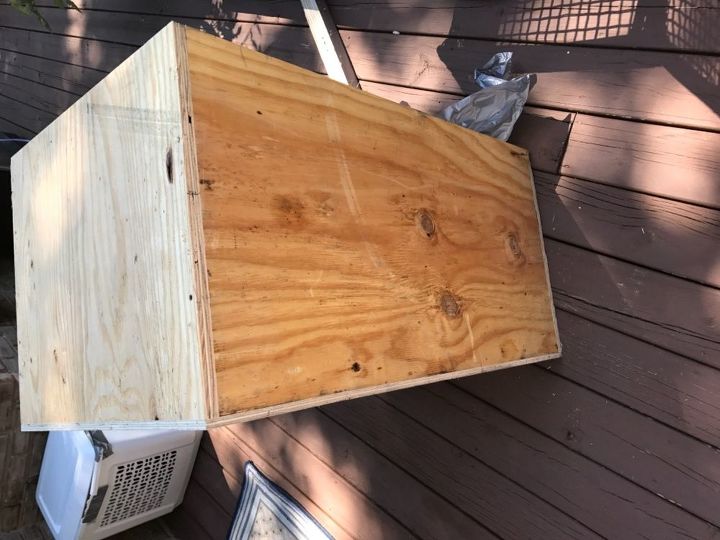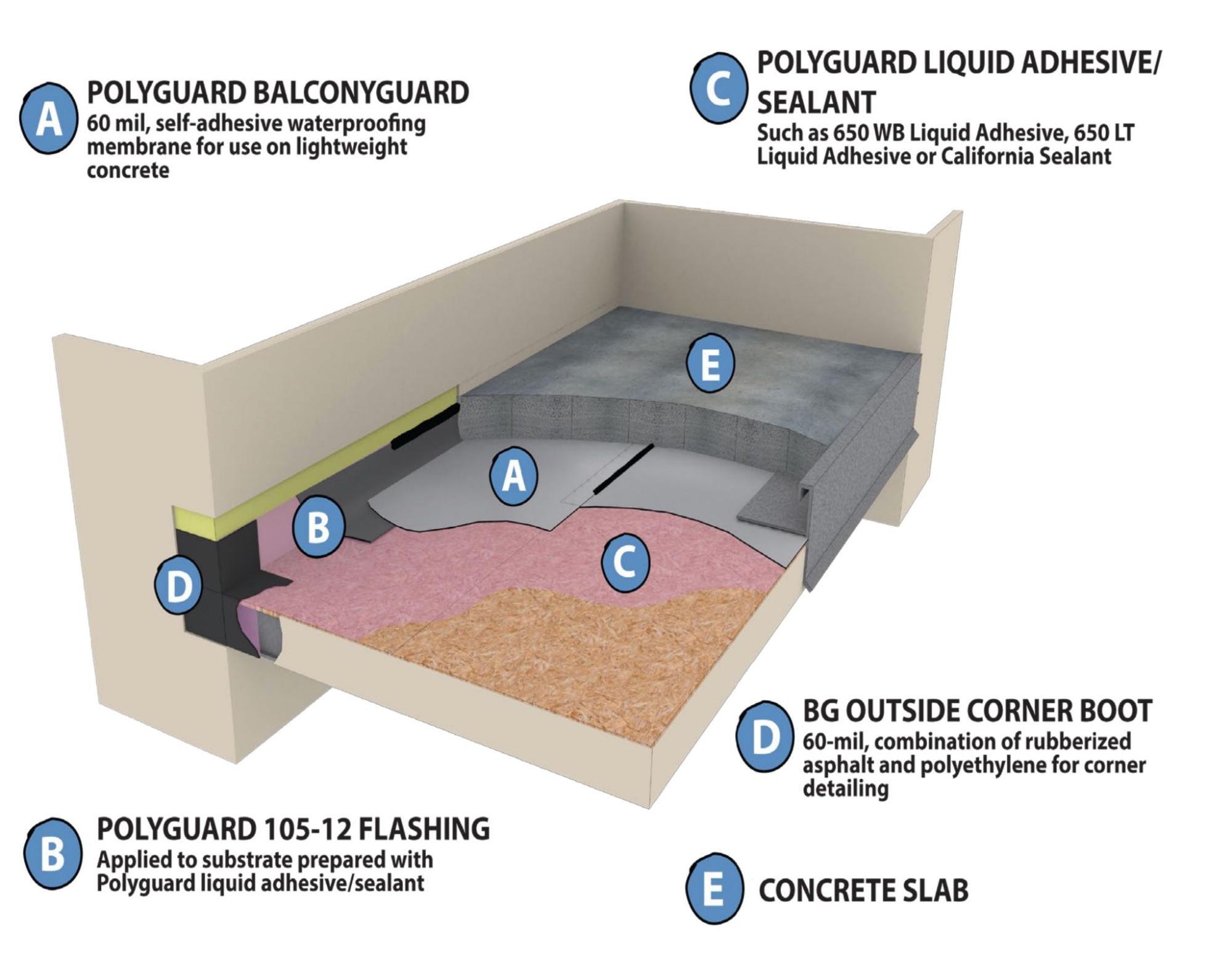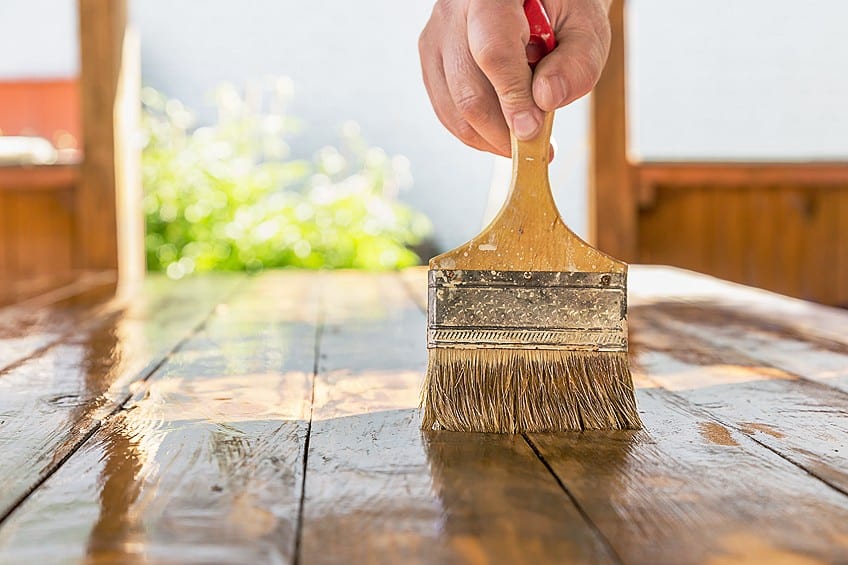Finding wood that can withstand the elements is a priority for anyone looking to build durable outdoor structures or protect indoor spaces exposed to moisture, like bathrooms or kitchens. Yet, the question remains: Is there truly waterproof wood, or are there simply wood types and treatments that resist water better than others?
Wood’s natural characteristics make it susceptible to damage from water, which can cause it to warp, swell, and eventually decay. However, certain types of wood have unique properties that allow them to resist moisture, while others can be treated to enhance water resistance. Understanding the difference between waterproof and water-resistant woods, as well as how treatments can help, is essential to making an informed choice.

What Makes Wood Waterproof?
Wood is a natural, porous material, which means it can absorb water, making it vulnerable to damage. However, certain types of wood naturally resist water better than others. Additionally, various treatments and finishes can create a waterproof layer on wood, protecting it from moisture. Understanding these principles will help you select the best wood for your needs.
Explanation of “Waterproof” vs. “Water-Resistant”
When we talk about “waterproof” wood, it’s important to differentiate between waterproof and water-resistant:
- Waterproof Wood: True waterproof wood repels water completely, making it suitable for continuous exposure to water. However, most natural woods are not 100% waterproof.
- Water-Resistant Wood: Water-resistant wood can withstand occasional or limited exposure to moisture without significant damage. It will repel water to some extent but needs protection in high-moisture environments.
For example, teak wood is highly resistant to water and is used in boats and outdoor furniture, but it’s not entirely waterproof. Fully waterproof wood, in reality, is rare and often achieved through treatments or coatings.
Why Water Is Problematic for Most Wood Types
Water’s effect on wood is twofold: it seeps into the wood’s fibers, causing it to expand, and if left untreated, moisture can lead to swelling, warping, and even rot. These issues occur because wood fibers absorb water, altering their structure. For instance:
- Swelling and Shrinking: When wood absorbs moisture, it expands, and when it dries, it contracts. This repeated expansion and contraction can cause cracks, warping, and structural damage over time.
- Mold and Mildew Growth: High moisture levels also create an environment where mold and mildew can thrive, leading to decay and compromising the wood’s strength.
- Decay and Rot: If exposed to constant moisture, wood is susceptible to rot, especially in outdoor environments.
Natural vs. Treated Waterproofing Properties
There are two primary ways wood can become resistant or “waterproof” — either through its natural properties or by applying a waterproofing treatment.
- Natural Properties: Some wood types, like teak and cedar, contain oils or compounds that repel water naturally, making them inherently resistant to moisture. These woods can stand up well to outdoor exposure and are often used in decks, furniture, and even boats.
- Treated Waterproofing: Wood that doesn’t have inherent water-resistant properties can be treated with sealants, oils, and finishes that create a water-repellent surface. Pressure treatments, for instance, force chemicals deep into the wood to resist moisture and prevent rot.

Types of Naturally Water-Resistant Woods
Certain woods naturally repel water better than others due to their composition, density, and the presence of oils. These woods are excellent choices for projects where moisture resistance is essential, such as outdoor furniture, decks, and even marine environments. While they aren’t entirely waterproof, these woods can withstand significant exposure to moisture without quickly deteriorating.
Teak Wood
Teak is often considered the gold standard for water-resistant wood. Native to Southeast Asia, teak is prized for its natural oils and tight grain, which make it highly resistant to moisture, insects, and decay. For centuries, teak has been used in boat-building, which speaks to its ability to handle even harsh, saltwater environments.
- Durability: Teak is incredibly durable, even without additional treatments.
- Maintenance: While teak doesn’t require sealing, it does benefit from occasional oiling to maintain its rich color and prevent it from graying with exposure.
- Ideal Uses: Teak is perfect for outdoor furniture, garden benches, boat decks, and other high-moisture applications.
Fun Fact: Teak contains natural silica, which contributes to its ability to withstand water and resist fungal growth.
Cedar Wood
Cedar is a softwood that is naturally water-resistant due to its aromatic oils, which help protect against moisture, insects, and rot. It’s a lightweight yet durable wood often used for outdoor projects. Its resistance to warping and cracking makes it ideal for changing weather conditions.
- Durability: Cedar performs well in moist environments but should still be sealed for prolonged exposure.
- Maintenance: Applying a sealer helps maintain its water resistance, although many prefer the natural look of weathered cedar.
- Ideal Uses: Cedar is popular for siding, shingles, decks, and outdoor structures like pergolas and garden furniture.
Environmental Note: Cedar is a renewable resource, making it an eco-friendly choice if sourced from sustainably managed forests.
Redwood
Redwood is another highly water-resistant wood, often chosen for its rich, reddish hue and natural durability. Similar to cedar, redwood contains natural oils that repel water, making it less prone to rot and decay. Its unique cellular structure helps it maintain shape and resist shrinking, making it ideal for various outdoor uses.
- Durability: While redwood can last many years outdoors, it can benefit from occasional treatment to maintain color and strength.
- Maintenance: Redwood tends to gray over time, so sealing is recommended if you want to preserve its natural color.
- Ideal Uses: Redwood is often used for decks, garden furniture, siding, and other outdoor projects where appearance and durability are important.
Sustainability Tip: Look for certified redwood from responsibly managed forests to ensure minimal environmental impact.
Ipe Wood (Brazilian Walnut)
Known for its incredible hardness and density, Ipe is a tropical hardwood native to South America. It’s so dense that it doesn’t float in water, and this density makes it extremely resistant to moisture, insects, and rot. Ipe is a popular choice for high-end decking and outdoor furniture, though it requires special tools to work with due to its hardness.
- Durability: Ipe can last over 25 years in outdoor settings without needing extensive treatment.
- Maintenance: Ipe is low-maintenance but can be oiled to retain its dark brown color; otherwise, it will weather to a silvery gray.
- Ideal Uses: It’s widely used for decks, boardwalks, and outdoor furniture due to its unparalleled durability.
Cost Consideration: Ipe is more expensive than other woods due to its rarity and the difficulty of working with such dense material.
Other Naturally Resistant Woods (Mahogany, Bald Cypress)
There are a few other woods that naturally resist water, such as Mahogany and Bald Cypress:
- Mahogany: Known for its beautiful reddish color, mahogany has moderate water resistance and is commonly used in humid, interior settings.
- Bald Cypress: Often used in swampy or wetland areas in the U.S., bald cypress has good resistance to moisture and is a traditional choice for outdoor projects.
These woods offer various levels of durability and aesthetic appeal, with specific benefits depending on the type of project and level of moisture exposure.
| Wood Type | Natural Oils | Durability | Common Uses | Cost |
|---|---|---|---|---|
| Teak | Yes | High | Outdoor furniture, decks | High |
| Cedar | Yes | Moderate | Siding, garden furniture | Moderate |
| Redwood | Yes | Moderate | Decking, outdoor structures | Moderate |
| Ipe | No (density) | Very High | High-end decks, boardwalks | High |
| Mahogany | Yes | Moderate | Humid interiors | High |
| Bald Cypress | Yes | Moderate | Swampy areas, outdoor uses | Moderate |
Each of these wood types brings its own set of advantages and maintenance needs, allowing for flexibility depending on the project and environment.

Treated Wood Options for Waterproofing
When natural water-resistant woods aren’t feasible or affordable, treated wood options offer a great alternative. By applying specific treatments, even woods that normally absorb moisture can withstand damp environments, preventing rot and extending their lifespan. Treated wood offers flexibility and durability, making it ideal for projects exposed to significant moisture, whether indoors or outdoors.
Pressure-Treated Wood
Pressure-treated wood is wood that has been infused with chemicals under high pressure, making it resistant to moisture, insects, and decay. This process is commonly used on pine and other softwoods that aren’t naturally water-resistant, significantly increasing their durability and making them suitable for outdoor use.
- How It Works: The wood is placed in a pressure chamber, where chemicals like copper azole and alkaline copper quaternary (ACQ) are forced deep into its fibers. These chemicals act as preservatives, making the wood resistant to moisture and insect damage.
- Benefits: Pressure-treated wood is more affordable than many natural water-resistant woods, making it popular for fences, decks, and playgrounds.
- Limitations: While it resists rot and insect damage, pressure-treated wood can still warp or crack if not properly sealed. It’s also important to consider safety; some treated woods contain chemicals that may not be safe for indoor use or for furniture in direct contact with skin.
Key Tip: When working with pressure-treated wood, use gloves and a mask to avoid exposure to chemicals, and avoid burning it, as the chemicals can be hazardous when released as smoke.
Water-Repellent Wood Sealers and Finishes
Wood sealers are an effective way to create a water-resistant layer on the surface of any wood, adding an additional layer of protection against moisture. There are various types of sealers, from oil-based to water-based finishes, each with unique properties:
- Oil-Based Sealers: These penetrate deeper into the wood’s fibers, offering long-lasting protection and bringing out the wood’s natural color. Common oil-based sealers include linseed oil and tung oil.
- Water-Based Sealers: Water-based sealers dry faster and produce fewer fumes than oil-based options. They sit more on the surface, making them suitable for areas that may see only occasional moisture.
Applying these sealers typically involves sanding the wood, cleaning it, and applying multiple layers with a brush or cloth. Each layer must be allowed to dry thoroughly to maximize protection.
Pro Tip: For best results, apply a sealer annually or as needed based on exposure. Regular maintenance will ensure the wood remains protected and visually appealing.
Wood Coatings and Specialized Treatments
For heavy-duty waterproofing, coatings such as polyurethane, epoxy, and varnish can create a completely waterproof barrier. These coatings are especially useful for wood that will face extreme moisture or submersion, such as boat decks or countertops near sinks.
- Polyurethane: Available in oil- and water-based formulas, polyurethane provides a hard, protective layer that resists scratches and moisture. It’s commonly used on indoor furniture but can be used outdoors if UV-protected.
- Epoxy: Epoxy is a strong, clear resin that cures to form a glass-like finish, making wood impervious to water. Often used in high-wear, high-moisture applications, epoxy is popular for bar tops, boat decks, and river tables.
- Varnish: Varnish offers a flexible layer that is resistant to UV rays, moisture, and temperature changes, making it ideal for outdoor use. Marine varnish, in particular, is formulated for heavy water exposure.
While these coatings can make wood highly water-resistant, they require a careful application process. Some, like epoxy, require multiple layers and may take several days to fully cure, but the result is a virtually waterproof surface that can handle extensive wear and tear.
Comparison of Treated Wood Options
| Treatment Type | Water Resistance | Typical Use Cases | Durability | Maintenance |
|---|---|---|---|---|
| Pressure-Treated | High | Decking, fences, outdoor furniture | Moderate-High | Low |
| Oil-Based Sealers | Moderate-High | Garden furniture, wood siding | Moderate | Annual |
| Water-Based Sealers | Moderate | Indoor wood, occasional moisture | Low-Moderate | Regular |
| Polyurethane | High | Furniture, cabinets, doors | High | Occasional |
| Epoxy | Very High | Bar tops, boat decks, river tables | Very High | Minimal |
| Varnish | High | Outdoor furniture, marine wood | High | Occasional |
Each treatment has its ideal use case, depending on the wood’s exposure to moisture and the desired finish. For example, pressure-treated wood is a cost-effective solution for outdoor structures, while epoxy provides a luxurious, ultra-durable coating for specialty furniture. Whether you’re looking to protect a wooden deck, furniture, or other projects, these treated options offer ways to achieve excellent water resistance tailored to your specific needs.

How to Waterproof Wood Yourself
If you’re working with wood that will be exposed to moisture or are looking to prolong the life of outdoor furniture, learning to waterproof wood yourself is an excellent skill. DIY waterproofing methods provide added durability, aesthetic appeal, and protection against the elements. Here, we’ll walk through step-by-step instructions and best practices for waterproofing wood using oils, sealers, and varnishes.
Step-by-Step Guide to DIY Waterproofing Wood
Materials Needed:
- Sandpaper (various grits, ideally 120 to 220)
- Clean cloth
- Oil (linseed or tung oil), wood sealer, or varnish
- Brush or rag for application
- Optional: Clear polyurethane or epoxy finish for added durability
Step 1: Prepare the Wood Surface
To begin, the wood surface must be clean and smooth to ensure a strong bond with the waterproofing finish.
- Sanding: Use sandpaper to remove rough spots, dirt, or previous finishes. Start with a medium grit (around 120) and work up to finer grits (220) for a smooth surface.
- Cleaning: Wipe down the sanded surface with a clean, damp cloth to remove dust. Allow it to dry completely before applying any finish.
Step 2: Choose Your Waterproofing Finish
There are various finishes you can choose based on your project’s needs:
- Oil-Based Finishes (e.g., linseed or tung oil): These oils penetrate deep into the wood fibers, providing a natural look and moderate water resistance.
- Wood Sealer: Sealers are surface treatments that provide a water-resistant layer and are ideal for wood exposed to moderate moisture.
- Varnish: Varnish provides a thicker, durable layer, especially suitable for outdoor furniture or surfaces exposed to frequent moisture.
Step 3: Apply the First Coat
With your chosen finish, follow these steps for application:
- Oil-Based Finishes: Apply a generous amount of oil with a brush or rag, moving along the wood grain. Let the wood soak up the oil for 15-30 minutes, then wipe off any excess with a clean cloth.
- Sealer or Varnish: Apply a thin layer with a brush, ensuring even coverage. Move along the grain to prevent streaks and bubbles.
Step 4: Allow Drying Time and Sand Between Coats
Let the first coat dry according to the product’s instructions (usually 24 hours). After it’s dry, lightly sand the surface with fine-grit sandpaper (220 grit) to remove imperfections and improve adhesion between layers.
Step 5: Apply Additional Coats
Repeat the application and sanding process for at least two to three coats to achieve the best water resistance. For oil finishes, this process ensures the wood has absorbed a sufficient amount. For sealers and varnishes, multiple coats add thickness to the protective layer.
Step 6: Optional: Apply a Clear Polyurethane or Epoxy Finish
For additional durability, especially if the wood will face heavy moisture or wear, consider adding a clear polyurethane or epoxy topcoat. This final layer will add high durability and a glossy finish, making it nearly waterproof.
Maintaining Waterproofed Wood
Waterproofing wood does require maintenance to retain its protective qualities, especially if the wood is exposed to the elements.
- Regular Cleaning: Gently clean the wood with a damp cloth and mild soap to remove dirt or grime. Avoid harsh chemicals, as they can degrade the finish.
- Reapply Finish: Depending on the type of finish, reapplication may be needed every 1-3 years. Oil finishes generally require more frequent maintenance, while varnishes and sealers last longer.
- Inspect for Damage: Look for signs of peeling, discoloration, or water spots, which can indicate the need for another protective layer.
Maintaining waterproofed wood preserves its beauty and functionality, ensuring it lasts for years. Whether using oils, sealers, or varnishes, DIY waterproofing offers a practical way to protect wood projects from the damaging effects of moisture.